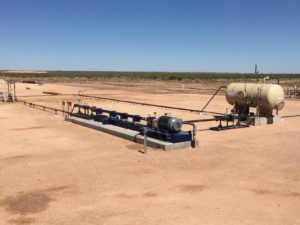 “People out here will argue that a rod pump will draw a well down further than any other method of artificial lift,” said Jay Miller, vice president of gas lift for Midland-based Production Lift, “and that is true if the rod pump can be positioned at the true vertical depth of the well.”
“People out here will argue that a rod pump will draw a well down further than any other method of artificial lift,” said Jay Miller, vice president of gas lift for Midland-based Production Lift, “and that is true if the rod pump can be positioned at the true vertical depth of the well.”
But the combination of long horizontal laterals and the regurgitation of frac sand in production means that the pump can’t be positioned at the true vertical depth of the well, Miller says, because rods will wear out against the tubing and the abrasiveness of the sand will destroy the pump itself.
Because of this, methods like gas lift, which were tried and rejected in previous decades, are being re-engineered and successfully reintroduced into the marketplace, especially in unconventional wells.
Re-engineered, that is, in this fashion: “New methods of using velocity and smaller tubing are allowing us to lower the bottom hole pressure down to around 200 psi with gas lift, from the true vertical depth of the well, which is going to change the way people operate in the Permian.”
Improved design and production technology have benefitted both gas lift and jet pumps. For William J. Jackson, president of Tech-FLO—based in Conroe with an office in the Permian Basin—said newer jet pump designs increase the intake and discharge areas, which “widens the area that jet pumps are applicable to.” More efficient surface pumps reduce the operating cost as well. That makes jet pumps competitive with other forms of lift based on horsepower per available fluid produced, Jackson said.
The actual prime movers for both systems are on the surface—a gas compressor for gas lift and usually an h-pump for jet pumps.
A jet pump uses a high-pressure fluid stream—usually produced water, but occasionally oil—to create a low-pressure situation at the intake (a Venturi valve) in effect, drawing the pump intake pressure down to a point less than the reservoir pressure to introduce produced fluid to the high pressure jet stream. At the surface, the liquids are separated, while the power fluid is recirculated for lift and produced fluids are sent down the flow line.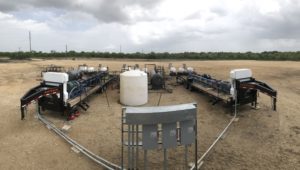
With no downhole moving parts, a jet pump is extremely tolerant to sand and debris in produced fluid and has no issues with gas locking. Jet pumps can also cover a wide range of production, producing wells from 20 BPD to in excess of 20k BPD. Gas lift involves installing a series of gas valves at intervals along the wellbore. Technically, said Miller, “Gas lift was not named correctly. Gas does not lift anything. The gas we inject changes the gradient, changes the weight of the fluid, and the bottom hole pressure of the well pushes the fluid to the surface.
“If we lighten that fluid enough,” he continued, “it takes less bottom hole pressure to get the fluid out of the well.” Miller feels “gas lightening” would be the more accurate term, but realizes that the original name is here to stay.
He added that gas lift might be more popular if more people understood how it works. “I’ve been on locations where the back pressure [on a gas lift well] was running 300 psi. You ask the pumper why. The pumper says, ‘I have to keep the gas in solution so it doesn’t lock my pump,’ and I’m like, ‘You don’t have a pump in there, you’ve got gas lift.’”
What’s needed is for the gas to escape, so the fluid is light enough for bottom hole pressure to push the oil out of the well. “There are huge, huge misconceptions on how gas lift works,” he said.
Jackson said one of the top improvements in jet pumps is on the surface—his company has replaced traditional plunger pumps with h-pumps (horizontal surface ESPs) and Wanner Engineering’s seal-less diagram pump technology (Hydra-Cell), for reliability and operational efficiency. The newer systems require much less maintenance, leading to a lower cost of ownership. Maintenance cycles run quarterly instead of the more extensive service on monthly intervals required with reciprocating plunger pumps.
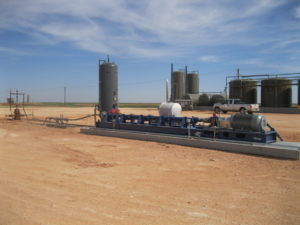 With h-pumps there’s an efficiency tradeoff. “You’re getting less volumetric efficiency through an h-pump, but you make that up in operational cost of ownership,” he said.
With h-pumps there’s an efficiency tradeoff. “You’re getting less volumetric efficiency through an h-pump, but you make that up in operational cost of ownership,” he said.
The Hydra-Cell pumps “provide the reliability of an h-pump with the volumetric efficiency of a plunger pump,” Jackson explained. “It’s a patented pump that we helped Wanner Engineering of Minneapolis develop for OFS.” Earlier Hydra-Cell pumps were limited to 30 HP but Wanner has designed models ranging from 100 HP to 200 HP, with a 300 HP model to be introduced in 2020. Jackson says, “It’s truly is a game changer for the lift and production pumping market.”
Jackson has seen a greatly renewed interest in jet pumps, not just for conventional oil production and flow backs but also for functions like cleanouts, zone isolation testing, and surface Venturi applications.
Technology advances have helped in several areas. Newer production machinery uses specialized metallurgy for a coating that eliminates the need for welds on pumps, increasing durability. In the field, the same sensors that provide data to producers also helps providers like Tech-FLO evaluate their equipment. “Before we were all linked up and could look at all this stuff on our phone, when something happened to a pump, it was, ‘Okay, you get out there,’ and it was either your fault or my fault,” and downtime could stretch into hours and longer.
“Here, we have 24-hour monitoring where, we had an issue with a larger client out here [in the Permian Basin] and they called at 5:00 on a Friday and said, ‘Oh, this pump won’t restart.’” When Jackson’s team logged into the day’s data, they were able to track the issue and recommend a course of action. The company uses its own tracking software for units they rent to producers.
When asked what kinds of wells are best suited for jet pumps, Jackson admitted to pro-jet pump prejudice before saying, “We have wells we’re producing that make 20 barrels per day and we have wells we’re producing that make 6,000-7,000 barrels per day. The thing about hydraulic lift is, if you’ve got bottom hole pressure and that fluid delivery it will always work. It’s just dependent on how much horsepower does it take you at the surface to make that work.”
In Miller’s thinking, gas lift also works in wider parameters than it’s given credit for.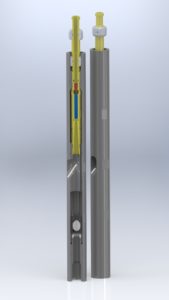
For years, he said, competitors said gas lift was inefficient at fewer than 600 barrels per day. “It’s not. It’s efficient all the way to depletion if you know what you’re doing. We’re working on some techniques for the rates between 600 barrels per day and depletion for gas lift that will lower the bottom hole pressure lower than a submersible pump.”
These techniques include new methods of using velocity smaller tubing that allow operators to reduce pressure down to around 200 psi with gas lift, from the true vertical depth of the well, said Miller. These new gas lift designs can be a better option in small tubing installations in the high paraffin and high iron sulfide wells common to the Permian.
“This can all be treated with chemicals, so we’ve got to get on board” to overcome objections by young engineers concerned about the paraffin and iron sulfide issues, Miller said.
He added that many unconventional wells spend the last half of their productive life on artificial lift, meaning that the production rates will be 800 barrels per day or less. “So it’s important that you have the right artificial lift to maximize the efficiency of the system throughout the life of the well.”
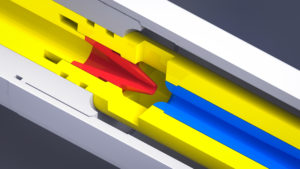 Unconventional production can be compared to blowing up a balloon, he pointed out. Frac’ing only reaches a specific distance from the hole, and unlike conventional wells, no more oil flows in from the rest of the formation. “There’s only a certain amount of room for the fluid, the gas and the oil and water. It’s like blowing up a balloon; the balloon goes to a certain diameter and it’s done. Same thing with this. And if you sit there and let these wells just flow back until they stop, all that pressure goes away. So we have to conserve bottom hole pressure,” in order to get all the oil possible from the formation. Gas lift, said Miller, can help preserve bottom hole pressure.
Unconventional production can be compared to blowing up a balloon, he pointed out. Frac’ing only reaches a specific distance from the hole, and unlike conventional wells, no more oil flows in from the rest of the formation. “There’s only a certain amount of room for the fluid, the gas and the oil and water. It’s like blowing up a balloon; the balloon goes to a certain diameter and it’s done. Same thing with this. And if you sit there and let these wells just flow back until they stop, all that pressure goes away. So we have to conserve bottom hole pressure,” in order to get all the oil possible from the formation. Gas lift, said Miller, can help preserve bottom hole pressure.
This is not to say ESPs and rod pumps are not still useful in many circumstances. But new technology has improved equipment design, equipment manufacture, well design, and ongoing monitoring to the point that old technology is practically brand new. This gives producers more weapons in the battle against margin shrink and investment flight.
_______________________________________________________________________________________________________
Paul Wiseman is a freelance writer in Midland.









